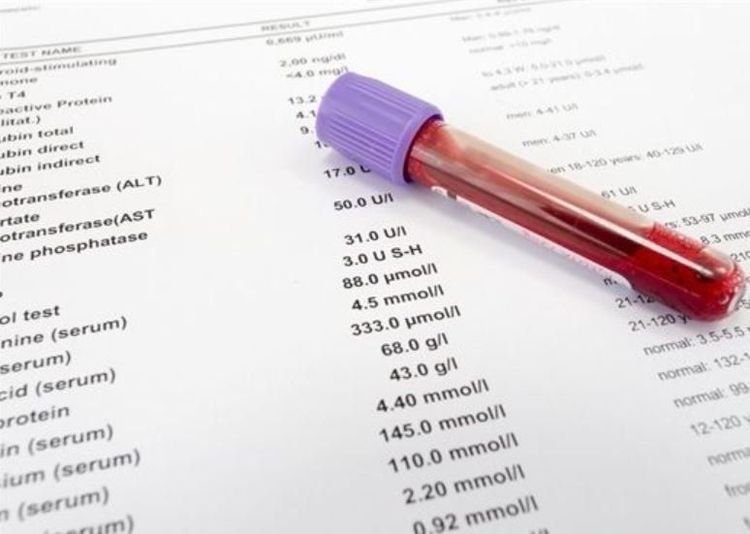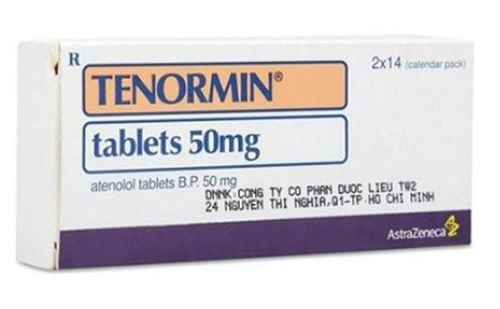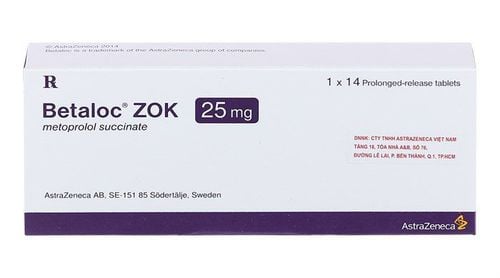This is an automatically translated article.
The article is professionally consulted by Master, Doctor Pham Thi Thuy Nhung - Head of Laboratory Department - Vinmec Hai Phong International General HospitalHaptoglobin is a protein of the α2 globulin group, capable of binding to hemoglobin. Haptoglobin quantification is one of the most commonly used tests to diagnose hemolytic anemia.
1. What is hemolytic anemia and what causes hemolytic anemia?
Red blood cells leave the circulation at the end of their normal lifespan (about 120 days). Hemolysis is the premature destruction of erythrocytes and thereby shortens erythrocyte survival (< 120 days). Anemia is the result of insufficient bone marrow production to compensate for the short lifespan of red blood cells, a condition known as uncompensated hemolytic anemia. If the bone marrow can't compensate, the condition is called compensated hemolytic anemia.
Causes of hemolytic anemia due to extra-erythrocyte disorders (exogenous)
Hypersplenism Immune system abnormalities (autoimmune hemolytic anemia, thrombocytopenic purpura) Mechanical trauma (anemia) traumatic hemolysis) Drugs (quinine, quinidine, penicillin, methyldopa, ticlopidine, clopidogrel) Toxins (lead, copper) Infections Pathogenic bacteria can cause hemolytic anemia through their toxins (eg: Clostridium perfringens, alpha-beta hemolytic streptococci, meningococcus), by bacteria that invade and destroy red blood cells (Plasmodium sp, Bartonella sp), or by antibody production (Epstein-Barr virus, mycoplasma) .
RBC abnormalities (endogenous) such as intrinsic defects of erythrocytes, which can cause hemolysis, are often related to abnormalities of the cell membrane, cell metabolism, or structure hemoglobin. Abnormalities include inherited and acquired cell membrane disorders (eg, erythrocytosis), metabolic disorders (eg, G6PD deficiency), and hemoglobinopathy (eg, thalassemia, leukopenia. sickle cell). Abnormalities in function and mass of certain erythrocyte membrane proteins (alpha and beta-spectrin, F-actin, protein 4.1, ankyrin) induce hemolysis.

2. What is haptoglobin quantification?
Haptoglobin test is done to measure the amount of haptoglobin in our blood. Haptoglobin is a protein produced by the liver that binds to hemoglobin, a protein found in red blood cells. Red blood cells have an important role in transporting oxygen from the lungs to the heart and the rest of the body. They are produced in the bone marrow and eventually broken down in the liver and spleen.
When red blood cells are destroyed, they release hemoglobin to form “free hemoglobin”. Haptoglobin binds to free hemoglobin to form a haptoglobin-hemoglobin complex. This complex travels to the liver and from there they are eliminated from the body.
Normally, the body maintains a balance between the production and destruction of red blood cells. However, when this process is disrupted, red blood cells can be shed at a faster rate than they are made. Free hemoglobin binds to haptoglobin. This is what causes haptoglobin levels to drop, as this protein is being eliminated from the body faster than the liver can make it.
Increased destruction of red blood cells can occur due to:
Broken heart mechanical valve, damaged Abnormal antibodies in the transfusion reaction Thalassemia disease, hemoglobinopathy Anemia occurs when the process of rupture RBCs are more active than the production of red blood cells in the bone marrow. An insufficient supply of red blood cells by the bone marrow means that the body is not getting enough oxygen.
Quantification of haptoglobin can help diagnose hemolytic anemia. This test can also help determine the exact cause of increased red blood cell destruction.
3. When is the haptoglobin test done?
Your doctor may decide to conduct a haptoglobin test if you are experiencing symptoms of hemolytic anemia, anemia. These symptoms may include:
Severe fatigue Pale skin Cold hands and feet Jaundice, or yellowing of the skin with yellow eyes Upper stomach pain Dizziness Lightheadedness Shortness of breath Arrhythmia or irregular heartbeat

4. Prepare for haptoglobin quantification
The haptoglobin test does not require any special preparation. It is important for the physician to take a full medical history and medication use to be able to interpret haptoglobin results more accurately.
Outcomes may be affected by the patient's underlying medical conditions, such as rheumatoid arthritis, ulcerative colitis, and chronic liver disease. They can also be affected by the use of certain medications, including corticosteroids and oral contraceptives.
5. How is the haptoglobin test done?
To perform the haptoglobin test, a small blood sample is taken. In most cases, blood will be drawn from a vein in the elbow. The sampling process goes as follows:
The sampling area is cleaned with alcohol or disinfectant solution. Tie an elastic band around the arm to make the veins bulge. Once the vein is found, insert a needle into the vein to get a tube of blood. After enough blood is drawn, remove the needle and cover the wound with a bandage to stop the bleeding. The haptoglobin test usually takes only a few minutes to complete. We should get our results within a few days.
6. What do haptoglobin test results mean?
Normal haptoglobin level is between 3.0 - 20.0 μmol/L. Reference range values may also vary slightly from laboratory to laboratory.
If we have a level lower than 3.0μmol/L, it is likely that red blood cells are being destroyed faster than they were made. At that time, hemolytic anemia or some other form of anemia may be present.

Test results may vary depending on the laboratory that analyzed your blood sample. Your doctor will discuss with us the individual results and explain what they mean. Depending on the results, we may need to do some more tests to get an accurate diagnosis.
Currently, the blood count test can be done individually or in all packages of General Health Checkup at Vinmec International General Hospital. Therefore, in order to protect their health, customers should actively check to have accurate assessments.
The health check at Vinmec hospital is performed by a team of doctors with many years of experience, so customers can be assured of the quality.
Please dial HOTLINE for more information or register for an appointment HERE. Download MyVinmec app to make appointments faster and to manage your bookings easily.
Reference source: healthline.com













